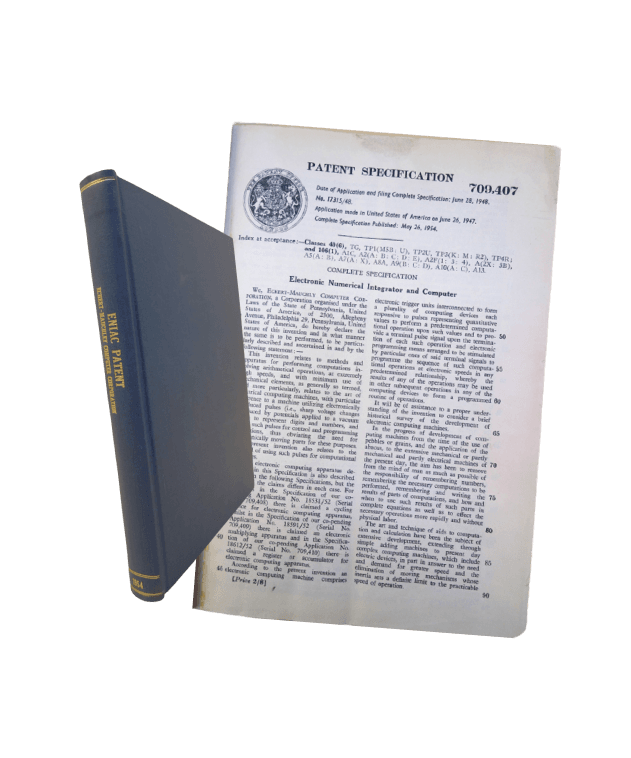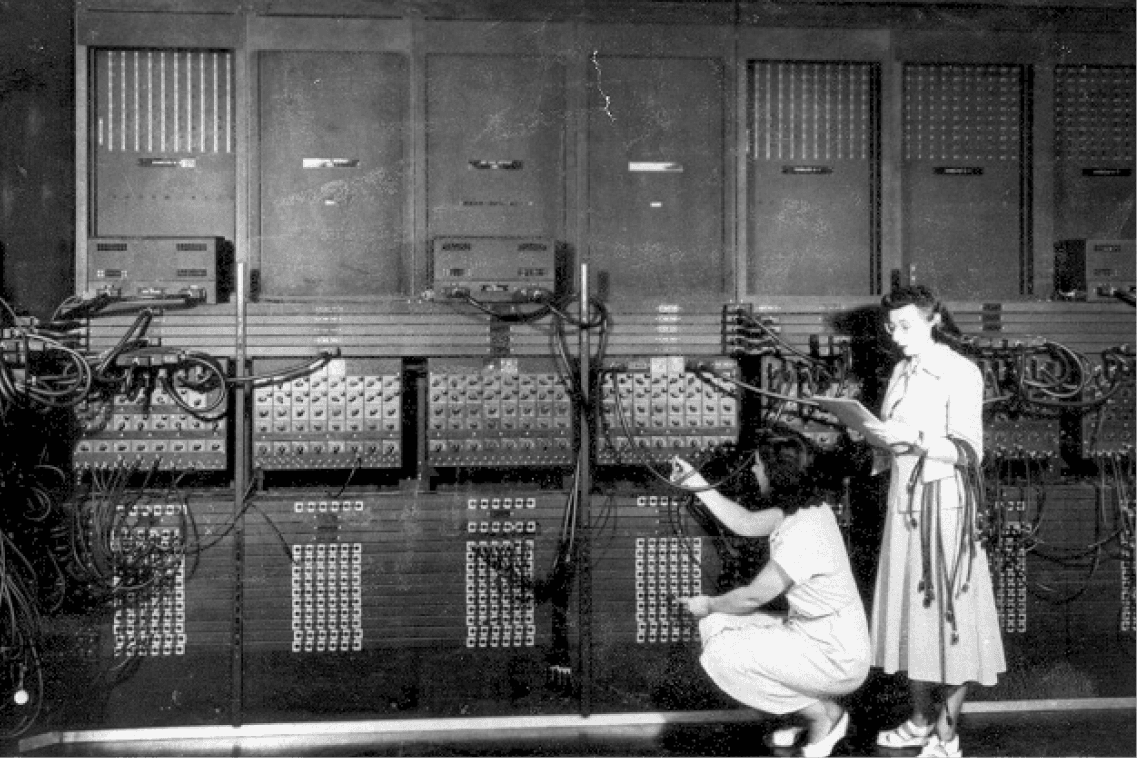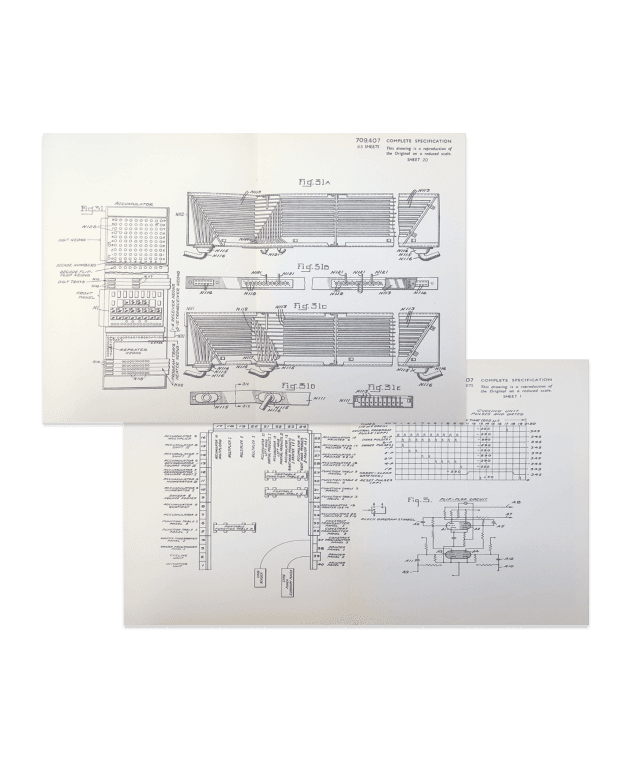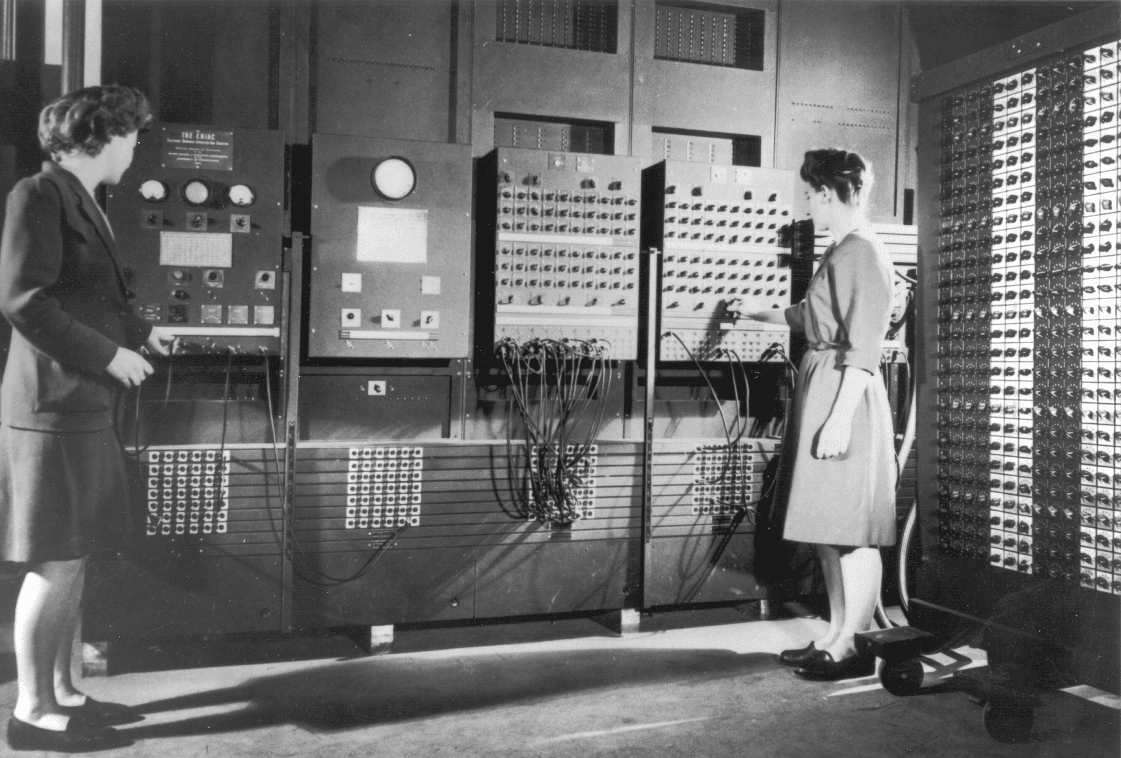AQ.0001
John Eckert & John Mauchly:
The ENIAC Patent (1954)
Patent specification
•
Acquired Apr 2022
The World's First Electronic Computer
Increasing computing speed by 2400 times and calculating a ballistics trajectory in seconds, the Electronic Numerical Integrator and Computer (ENIAC) represents the beginning of a computing movement that forever reshaped our society. The ENIAC ran more calculations than had been performed by all of humanity to date before being struck by lightning in 1955.
The ENIAC patent serves as the first comprehensive description of the general purpose electronic computer. It is also the first description in legal language of the operation and design of an electronic computer.
The patent is 188 pages, which includes 60 fold-out diagrams that represent over 18,000 vacuum tubes, and 7,200 diodes, establishing the groundwork for all computers that come after. The ENIAC patent is bound in library buckram originating from the 1950s and is still held in excellent condition to this day.
Details
Blueprints for the Future
After launching an acquisition round on April 4, 2022, the Arkive community engaged in discussion, dialogue, and debate to choose their inaugural work. The ENIAC patent was considered alongside the Burton BB1 Londonderry Snowboard Prototype built by Jake Burton himself in a Vermont barn.
With over 150 votes, the community selected the ENIAC patent as the first acquisition into the collection. Core team members then traveled to Marin County, California where they acquired the patent from legendary historian Jeremy Norman.
The patent will go on display globally via an Arkive traveling exhibition in late 2022. Following that, the patent will enter into long term residency at a prominent computing history museum, as selected by the Arkive membership.



